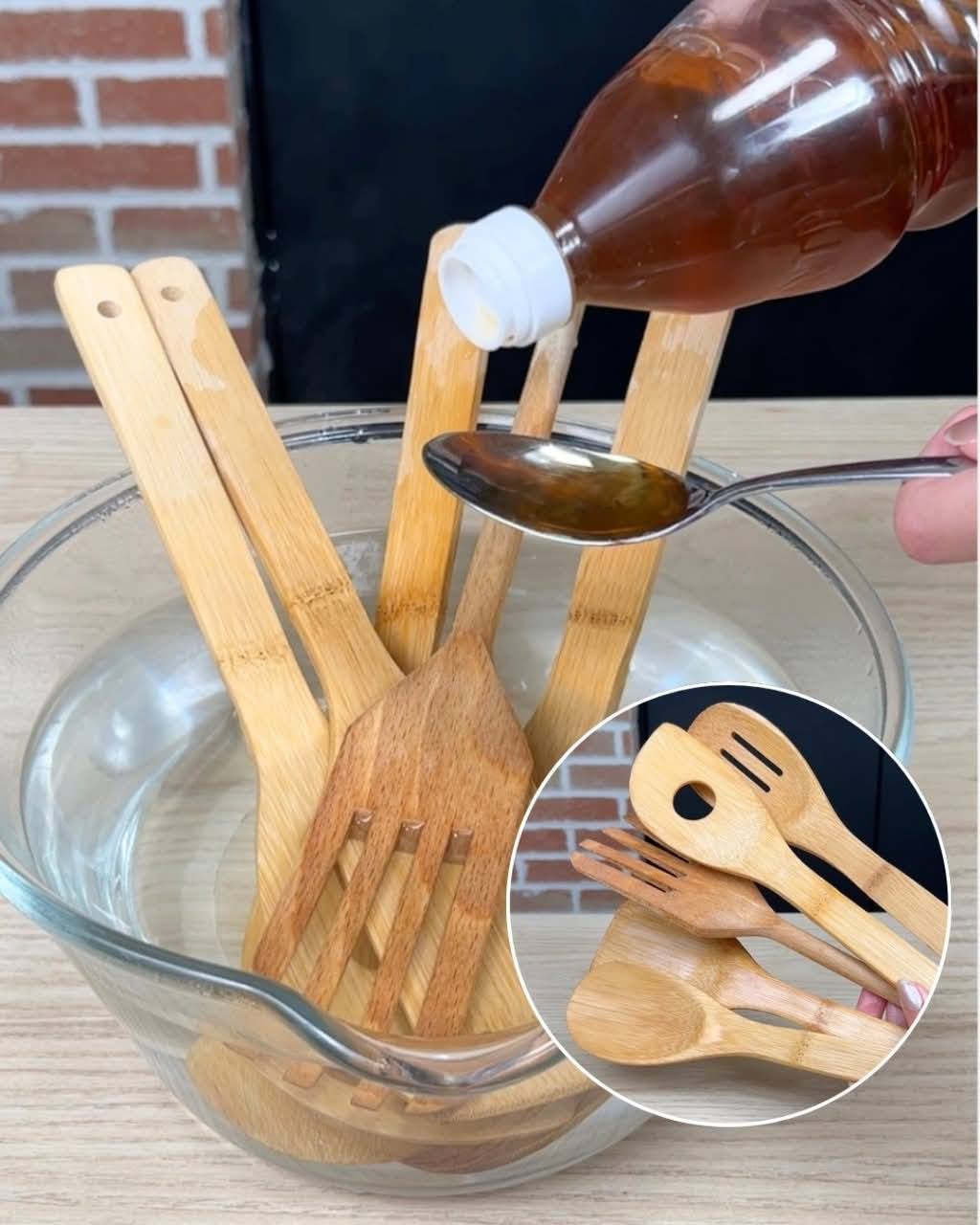ADVERTISEMENT
### Trick #2: Remove Stubborn Stains and Odors with Baking Soda
Wooden utensils can sometimes absorb strong odors and stains, especially from foods like garlic, onion, and tomato. To restore their fresh scent and appearance, you can use baking soda—a gentle, natural cleaner that works wonders for removing stains and odors.
#### How to Clean:
1. **Make a Paste**: Mix baking soda with a small amount of water to create a paste. The consistency should be thick enough to apply directly to the surface of the wood.
2. **Scrub Gently**: Using a soft cloth or sponge, apply the baking soda paste to the stained or odorous areas of your wooden utensils. Gently rub in circular motions to lift stains without damaging the wood.
3. **Rinse Thoroughly**: Once you’ve scrubbed the stains, rinse the utensils thoroughly with warm water and dry them immediately with a clean towel.
*Tip:* For an extra odor-fighting boost, you can add a small amount of white vinegar to the paste for an additional deodorizing effect.
### Trick #3: Restore and Protect the Wood with Oil
Over time, wooden utensils can lose their luster and become dry, especially after frequent washing. To keep them looking beautiful and ensure they don’t crack, it’s important to regularly condition the wood with an appropriate oil. This helps restore moisture, protect the wood, and preserve its natural grain.
#### How to Oil Wooden Utensils:
1. **Choose the Right Oil**: Use food-safe oils like mineral oil, beeswax, or coconut oil. These oils are non-toxic and will create a protective barrier without affecting the taste of your food.
2. **Apply a Thin Layer**: Pour a small amount of oil onto a soft cloth and gently rub it onto the surface of your wooden spoon or utensil. Focus on the entire utensil, including the handle, to keep the wood conditioned.
3. **Let it Absorb**: After applying the oil, let the utensil sit for a few hours to allow the wood to absorb the oil. If the utensil still looks dry, apply another thin layer.
4. **Buff Off Excess Oil**: Once the oil has absorbed, buff the utensil with a clean, dry cloth to remove any excess oil and restore a smooth, shiny finish.
*Tip:* Oiling your wooden utensils every few weeks or after deep cleaning will help maintain their beauty and longevity.
### Additional Tips for Maintaining Wooden Utensils
– **Avoid Harsh Chemicals**: Steer clear of bleach or harsh chemical cleaners, as these can damage the wood and make it unsafe for food preparation.
– **Store Properly**: When not in use, store wooden utensils in a dry, cool place. Avoid leaving them submerged in water or in direct sunlight, as this can lead to cracking and fading.
– **Prevent Scratches**: Be mindful of how you use wooden utensils. Avoid using them on rough surfaces like glass or stone countertops, as this can cause scratches or damage the wood.
### Conclusion
Wooden spoons and utensils are timeless kitchen tools that deserve proper care and attention to ensure they last for years. By following these three simple tricks—hand washing, removing stains with baking soda, and regularly oiling your utensils—you can keep your wooden kitchen tools looking beautiful and functioning well.
With a little maintenance, your wooden utensils will continue to bring charm, warmth, and functionality to your kitchen. So, the next time you reach for your favorite wooden spoon, you’ll know exactly how to keep it in perfect condition, ready to stir up your next delicious dish!
ADVERTISEMENT
